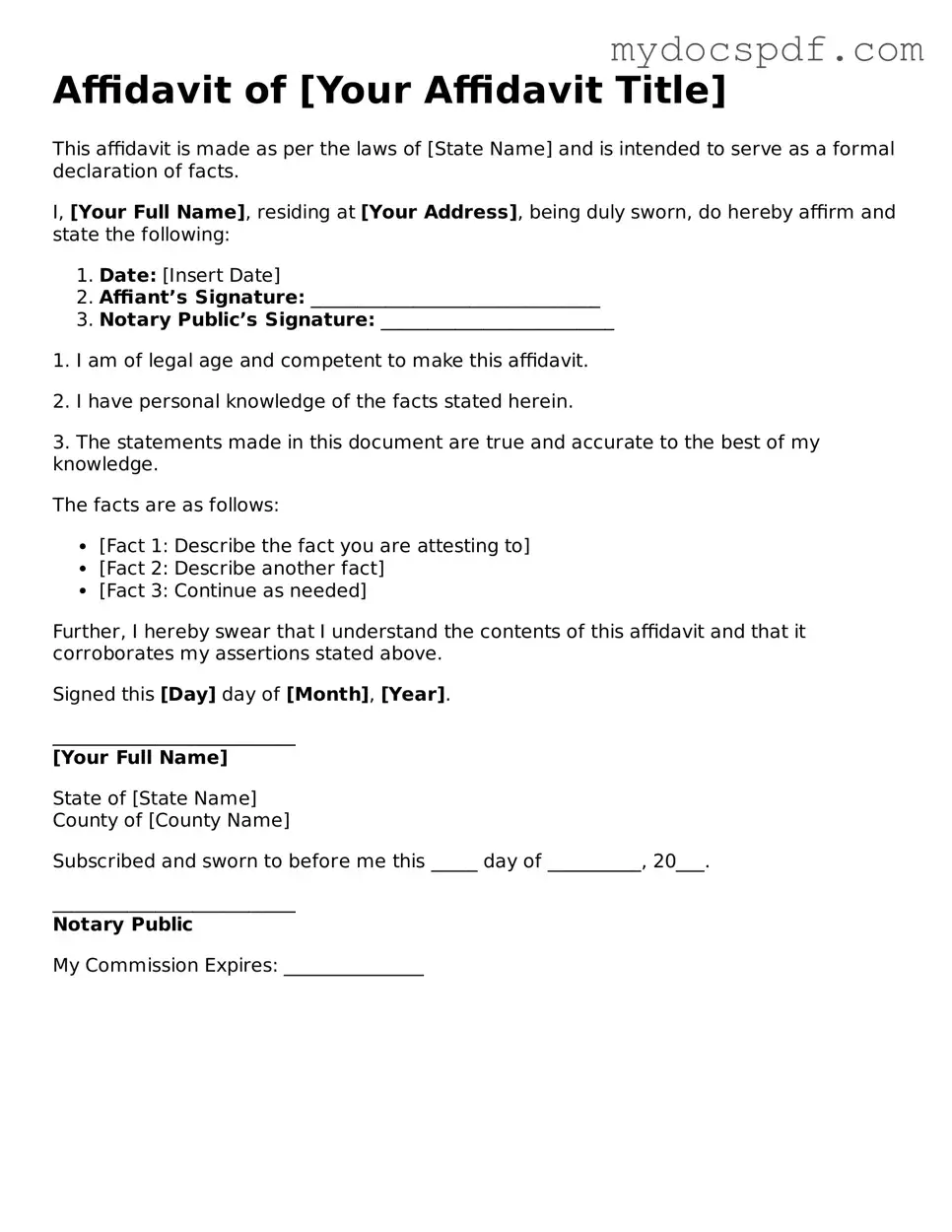Affidavit of [Your Affidavit Title]
This affidavit is made as per the laws of [State Name] and is intended to serve as a formal declaration of facts.
I, [Your Full Name], residing at [Your Address], being duly sworn, do hereby affirm and state the following:
- Date: [Insert Date]
- Affiant’s Signature: _______________________________
- Notary Public’s Signature: _________________________
1. I am of legal age and competent to make this affidavit.
2. I have personal knowledge of the facts stated herein.
3. The statements made in this document are true and accurate to the best of my knowledge.
The facts are as follows:
- [Fact 1: Describe the fact you are attesting to]
- [Fact 2: Describe another fact]
- [Fact 3: Continue as needed]
Further, I hereby swear that I understand the contents of this affidavit and that it corroborates my assertions stated above.
Signed this [Day] day of [Month], [Year].
__________________________
[Your Full Name]
State of [State Name]
County of [County Name]
Subscribed and sworn to before me this _____ day of __________, 20___.
__________________________
Notary Public
My Commission Expires: _______________
